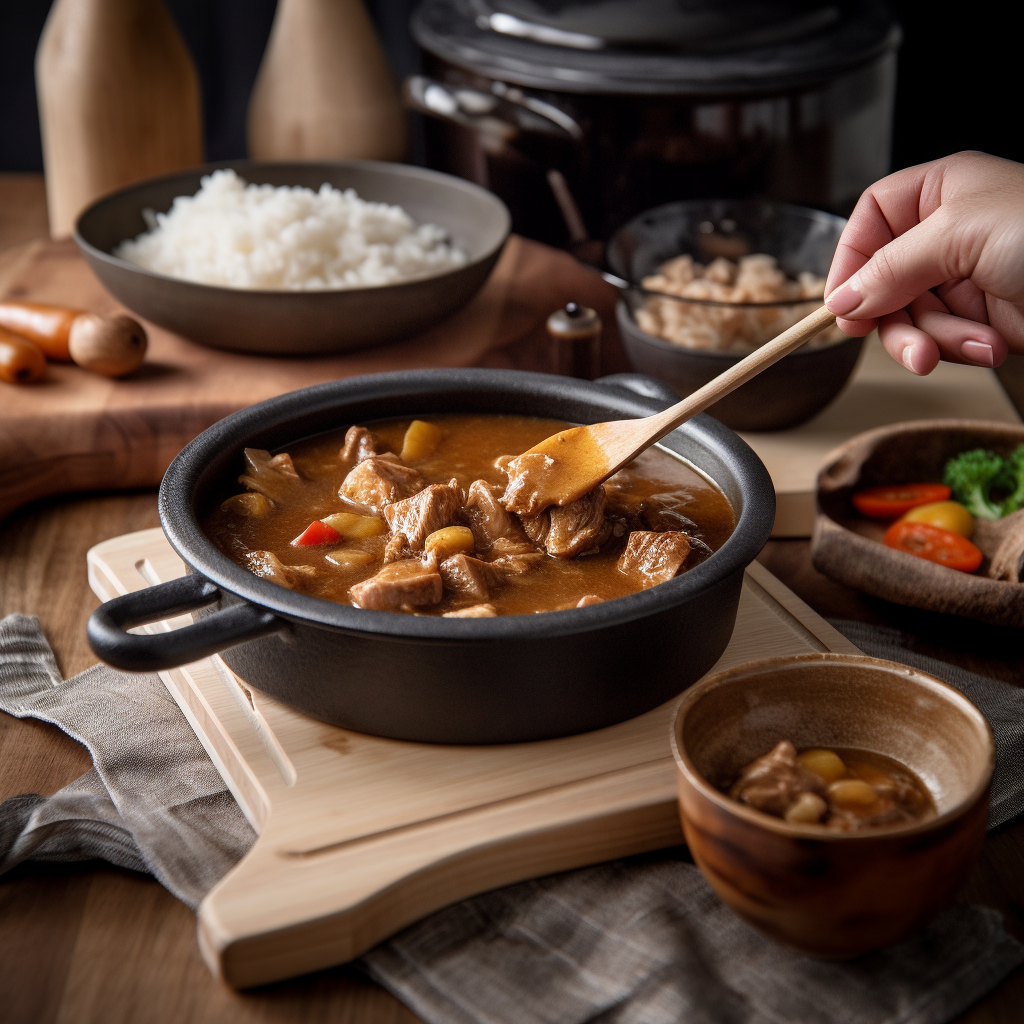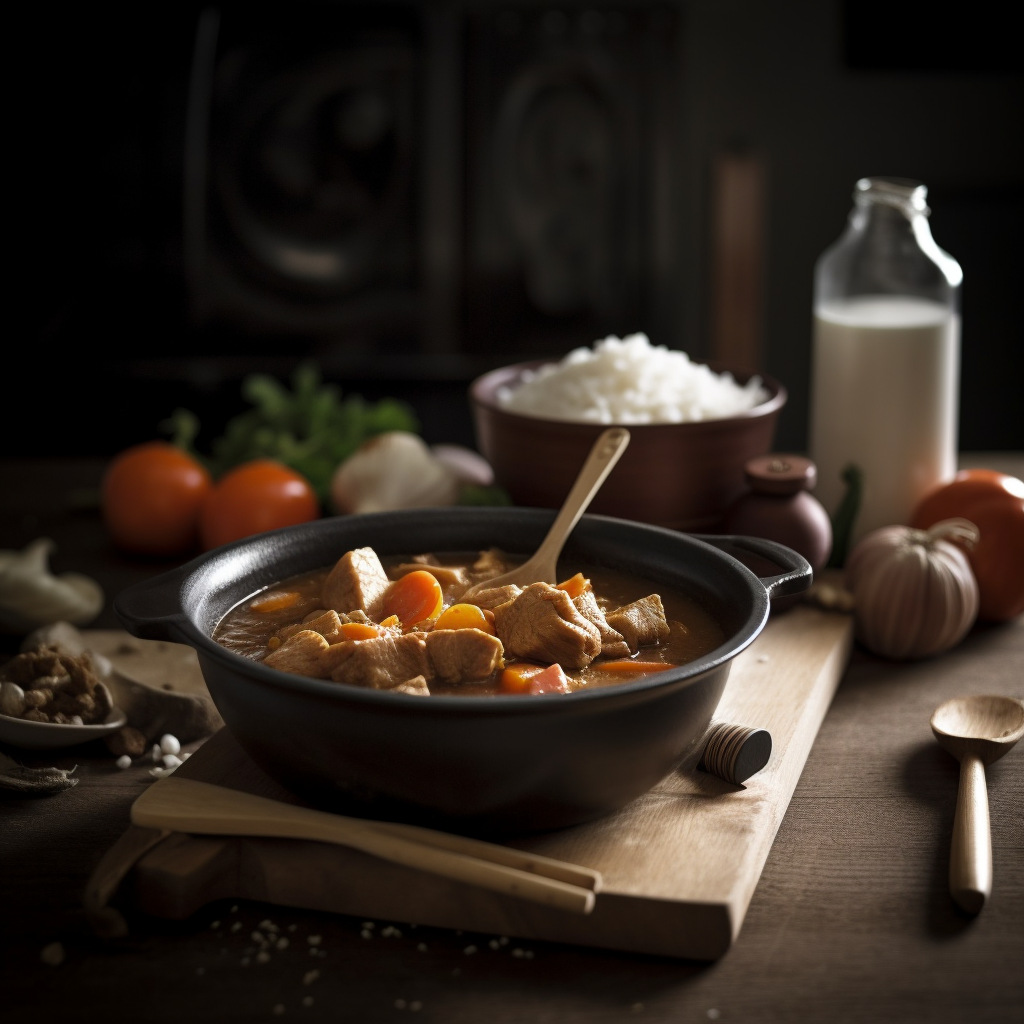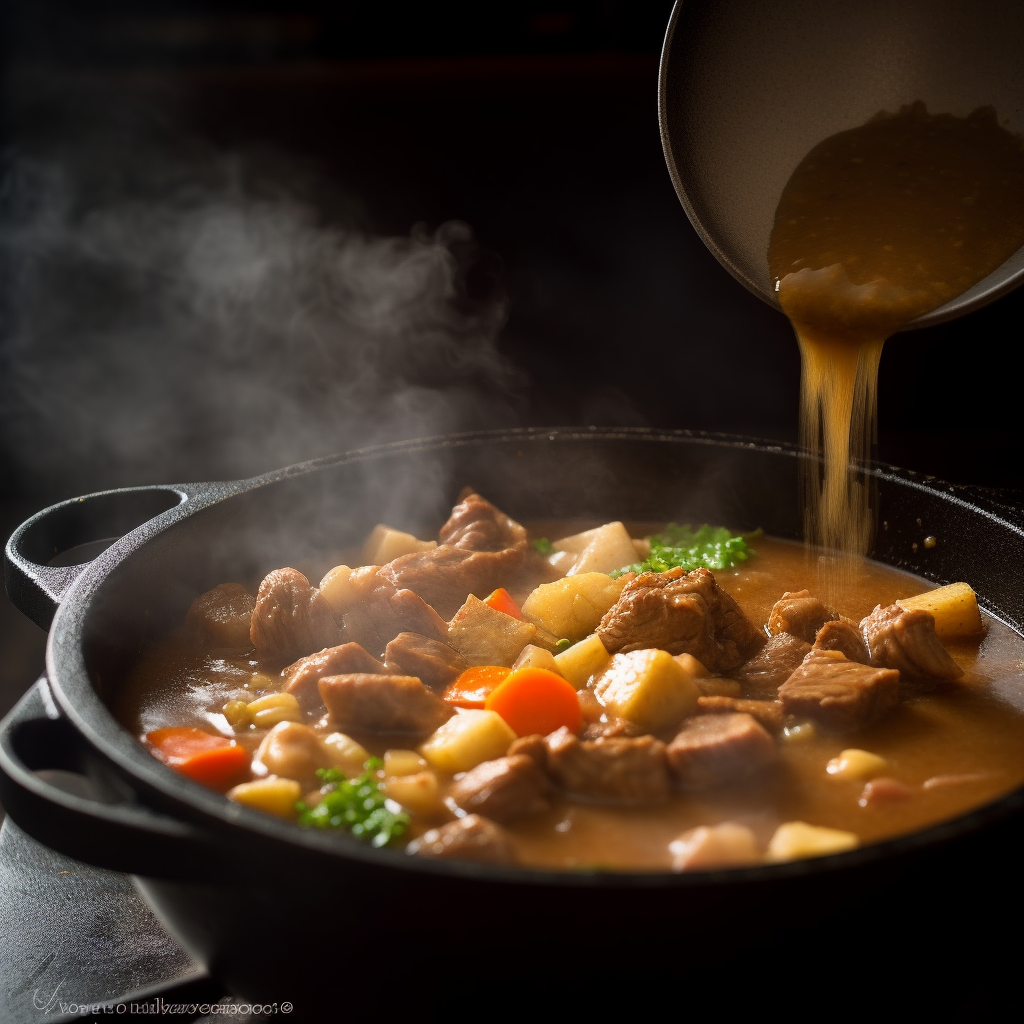Hello, Austin here from Beyond The Bayou Blog, ready to share a taste of Japan with my latest recipe: Japanese pork curry. As a food lover always on the hunt for new flavors, I couldn’t resist diving into the world of Japanese cuisine.
This dish combines tender pork, hearty veggies, and a rich curry sauce that’s downright irresistible. Whether you’re a curry connoisseur or new to the game, this recipe promises to hit all the right notes.
Plus, it’s perfect for cozy nights in or impressing guests with something a little different. So grab your apron and let’s get cooking! Get ready to transport your taste buds to Japan with this homemade Japanese pork curry.
I have even tried some other Japanese recipes which you can definitely check like Eel Sushi and Spicy Crab Roll.
What is Japanese Curry?
Often described as mild and thick, Japanese curry has become incredibly popular in Japan and enjoyed by people of all ages. It’s always served with steamed rice and commonly includes proteins like chicken, beef, pork, or seafood, along with potatoes, onions, and carrots.
Unlike Thai or Indian curry, where spices are added at the beginning, Japanese curry is seasoned with curry roux toward the end of cooking. Until then, it’s essentially a plain soup or stew.
What is the Difference Between Japanese Curry, Indian Curry and Thai Curry?
- Japanese Curry was introduced to Japan in the 19th century, Japanese curry underwent modifications to suit local tastes—less spicy and sweeter. It’s thicker, with a rich umami flavor, and milder compared to Indian or Thai curry. Typically served with rice or noodles.
- Indian Curry is known for its pronounced spice-forward flavor, Indian curry can be much spicier than Japanese curry. It’s commonly served with rice and/or bread like naan or roti.
- Thai Curry is the soupiest of all, often coconut milk-based. It features herbs like lemongrass and kaffir lime, seasoned with fish sauce—ingredients less common in Japanese and Indian curry. Rice and noodles are common accompaniments.
Overview: How To Make Japanese Pork Curry?

If you have not prepared this recipe till now, get ready for a delicious homemade Japanese curry adventure! Start by prepping your veggies and pork, cutting them into bite-size pieces for maximum flavor in every bite.
Next, brown the pork in your trusty pot until it’s perfectly golden and fragrant. Then, toss in those vibrant veggies and add water, letting everything simmer until the potatoes are tender and bursting with goodness.
Now, here comes the magic moment: add in the Japanese curry sauce mix or roux, stirring until it’s completely dissolved and your curry is rich and velvety smooth. Once it’s all melded together into a symphony of flavors, it’s time to plate up!
Ladle that irresistible curry over a bed of fluffy rice or your favorite noodles, and get ready to savor every mouthful of this comforting and oh-so-satisfying dish. Get ready to impress your taste buds with this homemade Japanese curry delight!
Savory Japanese Pork Curry
Equipment
- Cutting Board and Knife
- Pot
- Ladle or spoon
Ingredients
- 2-3 boneless porkchop, cubed
- 1/4 large onion, cubed
- 1 tsp oil
- 3 cups water
- 2 medium size carrots, cut into big chunks
- 1 medium size potato, cut into big chunks
- Half a box of Japanese curry sauce
- Cooked rice
Instructions
- Cut vegetables and pork into bite-size cubes.
- Brown the pork in a pot.
- Add vegetables and water, then boil until potatoes are tender.
- Add Japanese curry sauce mix/roux and stir until dissolved.
- Serve over rice or noodles.
Nutrition
Time for The Tips!
- Choose the Right Cut: Opt for pork shoulder or loin for the most flavorful and tender meat.
- Season the Pork: Before browning, season the pork with a pinch of salt and pepper for extra flavor.
- Brown for Depth: Take your time browning the pork to develop rich, caramelized flavors. Don’t rush this step!
- Control the Heat: Adjust the heat as needed while simmering the vegetables to ensure they cook evenly without becoming mushy.
- Customize Your Veggies: Feel free to add your favorite vegetables like bell peppers, peas, or mushrooms for extra color and texture.
- Thicken to Preference: If you prefer a thicker curry, simmer it a bit longer after adding the curry sauce mix/roux until it reaches your desired consistency.
- Garnish with Freshness: Finish off your curry with a sprinkle of chopped cilantro or green onions for a pop of freshness and color.
What to Serve with Japanese Pork Curry?

Managing Leftovers!
- Store any leftover curry in an airtight glass container in the fridge for up to 3 days or in the freezer for a month.
- Leftover curry thickens as it cools, so when reheating, stir in ¼ cup (60 ml) water or more to loosen it. Reheat gently on low heat to prevent burning. If it’s too thin, simmer uncovered to reduce the sauce.
Frequently Asked Questions (FAQs)
Q: Can I use chicken instead of pork in this recipe?
A: Absolutely! Feel free to substitute chicken for pork in this recipe. Just ensure it’s cooked through before proceeding with the rest of the steps.
Q: How can I make the curry sauce thicker?
A:If you prefer a thicker sauce, you can simmer the curry for a bit longer after adding the sauce mix/roux until it reaches your desired consistency.
Q: Can I use rice noodles instead of regular noodles or rice?
A: Yes, rice noodles will work perfectly in this recipe. Just cook them according to the package instructions before serving with the curry.


Wednesday 10th of July 2024
Healthy and satisfying
Wednesday 10th of July 2024
Super easy and fast to make!
Wednesday 10th of July 2024
Great for a quick weeknight dinner.
Wednesday 10th of July 2024
Perfect for meal prep.
Birdie
Tuesday 9th of July 2024
best recipe so far